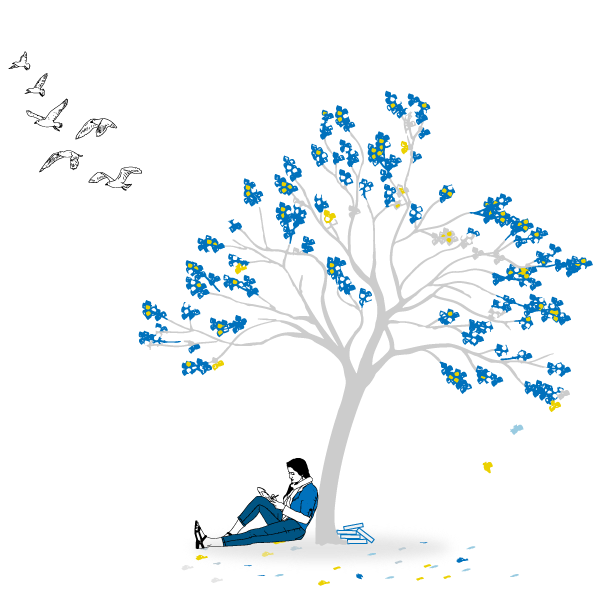John Gardner: Is it Art?
John Gardner’s On Moral Fiction set off a firestorm of controversy when it was first published in 1978. He argued that contemporary literature (and art) suffers first and foremost from a baisc failure of the test of “morality.” By this he meant art (including fiction) that tests human values, not for the purpose of preaching or condoning, but “an honest and open-minded effort to find out what best promotes human fulfillment.”
I re-read Gardner often when writing. It’s not easy for I agree with him and he constantly challenges. We have opinions but not beliefs, we have rants but won’t take a stand, we are afraid of the word ‘morality’ altogether, we have thoughts but not convictions, and worst of all we have sensationalized emotions (blog posts to reality TV) but not real empathy or dialogue that strums a universal chord.
I am curious about others’ thoughts, as it is indeed unnerving to question one’s creativity in a society where EVERYthing is considered “art.” This is not to say we are not all creative, but is it art?
Below I share some essential excerpts from Gardner’s On Moral Fiction. Later, I may include more related posts.
~a.q.s.
According to John Gardner, “True art, by specific technical means now commonly forgotten”, does the following:
1. Clarifies life
2. Establishes models of human action
3. Casts nets toward the future
4. Carefully judges our right and wrong directions
5. Celebrates and mourns.
6. It does not rant.
7. It does not sneer or giggle in the face of death; it invents prayers and weapons.
8. It designs visions worth trying to make fact.
9. It does not whimper or cower or throw up its hands and bat its lashes.
10. It does not make hope contingent on acceptance of some religious theory.
11. It strikes lighting, or is lighting; whichever.
Art’s chief value is that it takes nothing for granted.
He continues,
We need to stop excusing mediocre and downright pernicious art, stop “taking it for what it’s worth as we take our fast foods, our overpriced cars that are no good, the overpriced houses we spend all our lives fixing, our television programs, our schools thrown up like barricades in the way of young minds, our brainless fat religions, our poisonous air, our incredible cult of sports, and our ritual of fornicating with all pretty even horse-faced strangers.
We would not put up with a debauched king, but in a democracy all of us are kings, and we praise debauchery as pluralism. This book is of course no condemnation of pluralism; but it is true that art is in one sense fascistic: it claims, on good authority, that some things are healthy for individuals in a society and some things are not. Unlike the fascist in uniform, the artist never forces anyone to anything. He merely makes his case, the strongest case possible. He lights up the darkness with a lightning flash, protects his friends the gods—that is, values—and all humanity without exception, and then moves on.
The trivial has its place, its entertainment value. I can think of no good reason that some people should not specialize in the behavior of the left-side hairs on an elephant’s trunk. My objection is not to that game but to the fact that contemporary critics have for the most part lost track of their game, just as artists, by and large, have lost track of the point of theirs.
I do not deny that art, like criticism, may legitimately celebrate the trifling. It may joke, or mock, or while away the tie. But trivial art has not meaning or value except in the shadow of more serious art, the kind of art that beats back the monsters and if you will, makes the world safe for triviality. That art which tends toward destruction, the art of nihilists cynics, and merdistes, is not properly art at all. Art is essentially serious and beneficial, a game played against chaos and death, against entropy.
It is a certain kind of artist’s insistence that his art’s morality is relevant, since he writes (or paints or composes only for himself—to do anything else would be to aim at “the lowest common denominator,” that is, ordinary humanity. The artist who feels contempt for most of humanity, and who works not out of love but out of scorn or ego or some other base motive, will be remembered down through time only insofar as his work, despite his theories, is admired and loved by the children of ordinary humanity. The writer may not care about any reader other than himself, but his work has no public existence except insofar as the feeling is not mutual.
[Real] art asserts and reasserts those values which hold off dissolution, struggling to keep the mind intact and preserve the city, the mind’s safe preserve. Art rediscovers, generation by generation, what is necessary to humanness.



One of my favorite authors, Tolstoy says in ‘What is Art?’ that an Artists role is to communicate moral truth. He believed that Artists have responsibility to the masses, to express ‘simple truths’ as perceived by the Artist.Tolstoy damned Shakespeare and Wagner for their poetic eloquence, claiming they failed the fundamental role of Artist, which is to communicate moral truth. He believed their talents were a waste of the parchment they were written on.I’m not a critic, but if I were, I would be hard pressed to argue Tolstoy’s damning position of these great men. Communicating moral truth, as perceived by the Artist is, I believe, the first and foremost calling of an Artist. My choice of the word ‘calling’ is born out of the belief the Artist responds to a call from Art, not the reverse. Art moves through the Artist, like a call, a ringing voice of moral conviction.In my humble opinion, and it yes it is just that, very humble … Art without moral conviction, however technically eloquent, lacks thrust or velocity. As Tolstoy says it’s poetic, and eloquent, but wasted.But then personally, I also enjoy good poetry.CheersCatherine
Ahhhhh but Tolstoy was a man of great compassion, which I believe is his moral strength. Morality without compassion is judgement; from which we shrink.You mentioned this book is out of print, however I will look for it, as I’m interested in reading it.Thanks for bringing this to my attention AnnieCatherine
hi Catherine, it is out of print but still can be ordered. i know barnes and noble reissued it when i got it. i know 2 other people who have bought this special ordered after i mentioned it. thanks to online world, nothing is ever completely out of print! : ) yes, the reasons you point out are the exact reasons Gardner says Tolstoy (and Chekhov for that matter) are ART. : ) have a lovely day (day your side!) and thanks for your thoughts. very cold night in nyc but am still meeting some friends. been inside writing all day today! ~a.
yes, you are right. in fact, Gardner says, that is exactly why Tolstoy IS art. i appreciate your feedback.